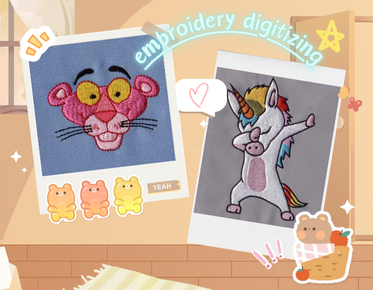Identifying Vector Format in PDF Files: A Comprehensive Guide
Knowing whether a PDF is in vector format can significantly impact how you handle, edit, or print the document. Vector graphics are essential for maintaining image quality at different sizes, making them an ideal choice for professional applications like printing and graphic design. But how can you determine if your PDF is a vector? In this guide, we’ll explore various methods and insights into understanding vector PDFs.
Understanding Vector and Raster Graphics
Before delving into identification techniques, it’s crucial to understand the difference between vector and raster graphics. Vector graphics are composed of paths defined by a start and end point, along with other points, curves, and angles. This allows the graphic to be resized without loss of quality. Common vector formats include SVG, AI, PDF, and EPS.
In contrast, raster graphics are made up of pixels. This pixel-based nature means that scaling results in a loss of quality, often leading to pixelation. Typical raster formats include JPEG, PNG, and GIF. For these reasons, vector graphics are preferred for projects where clarity and scalability are paramount, such as screen printing and promotional materials.
Using Software to Confirm Vector Format
Adobe Illustrator
Adobe Illustrator is one of the most reliable tools for checking if a PDF is in vector format. Here’s how you can do it:
- Open your PDF file in Adobe Illustrator.
- Use the Selection Tool to click on different parts of the image.
- If the different sections can be selected and manipulated individually, the file likely contains vector graphics.
In cases where the entire image is being selected as a single object, it could indicate the presence of a raster image instead.
Vector Graphics Software
Other vector graphics software like CorelDRAW or Inkscape can also be used for this purpose. They allow you to isolate and test elements within the PDF to determine their vector status. You can leverage online vector art services for more specific vector conversions.
Inspecting the PDF with a Text Editor
A less technical but insightful method involves checking the contents of a PDF using a text editor. Open the PDF with a text editor (e.g., Notepad or Notepad++), and look for paths, strokes, or fills. If these are present, they indicate vector graphics elements.
Visual Inspection and Practical Tests
Zoom In and Analyze
A straightforward way to assess vector graphics is by zooming in significantly on the PDF using a PDF viewer. Raster images will start to blur and pixelate at high magnifications, while vector images will maintain sharp edges and clarity. This method is quick and requires no special tools.
Printing Tests
Printing the PDF on a high-resolution printer can also reveal whether it’s vector-based. Vector content will appear crisp and detailed, while raster content might look blurry or unclear.
The Role of Professional Vector Services
When in doubt, seeking the expertise of professional vector conversion services can be invaluable. Companies like Eagle Digitizing offer a range of services including vector logo conversion and bitmap to vector conversions. Their skilled team assists in transforming images into vector format suitable for any application, from simple designs to complex artwork.
Eagle Digitizing not only converts your images to vectors but can also provide further image enhancements, such as color correction and retouching. These services are ideal for businesses looking to produce high-quality, scalable graphics without investing in expensive software or technical training.
Understanding PDF Annotations and Metadata
PDF files often contain metadata that can help you determine the nature of the graphics contained within. You can view this metadata by:
- Opening the PDF in a viewer like Adobe Reader.
- Navigating to 'File' and selecting 'Properties'.
- Checking for any mention of vector graphics software in the metadata.
Automated Tools and Online Services
Online Vector Conversion Tools
There are various online tools that can analyze your PDF and provide feedback on whether it includes vector elements. Services like online vector converters can offer an insight into the structure of your PDF, making it easier to ascertain its format.
You can explore platforms that specialize in converting and evaluating vector files to ensure your graphics are suitable for professional use. Utilizing a high quality vector converter is particularly beneficial when dealing with intricate designs and conversions.
Evaluating File Structure
PDF files that contain vector graphics usually have a significantly different file structure compared to raster-based PDFs. Analyzing the file size can provide a heuristic approach. Typically, fully vectorized PDFs are smaller due to their paths and mathematical data, whereas raster-based PDFs may be larger due to embedded pixel information.
Implications for Business and Design
Understanding whether your PDF is vector-based is not merely a technical exercise but a business imperative. Ensuring your design assets are vectorized allows for scalability and reduces the risk of quality degradation in professional printing contexts. This knowledge supports better decision-making and enhances the end product, whether it be promotional materials, branded merchandise, or professional documents.
As technology evolves, so too do the methods of creating and verifying vector files. Ongoing advancements in digital design tools continue to refine how graphics are converted and shared. Keeping abreast of these developments can be advantageous for both businesses and individual designers.
Exploring Future Trends
As we progress further into the digital age, vector graphics will likely continue to play a substantial role in digital media and publication. New software tools and technologies are continuously emerging, simplifying the process of transforming and confirming vector graphics. The shift towards more accessible and user-friendly design platforms suggests a democratization of vector art creation, providing greater opportunities for creative expression and business innovation.
With continued interest and investment in digital art technologies, the future looks promising for anyone involved in vector design. Whether you are a graphic designer, a marketer, or a small business owner, ensuring you have robust vector solutions in place will keep you ahead in an increasingly visual marketplace.
.png)

